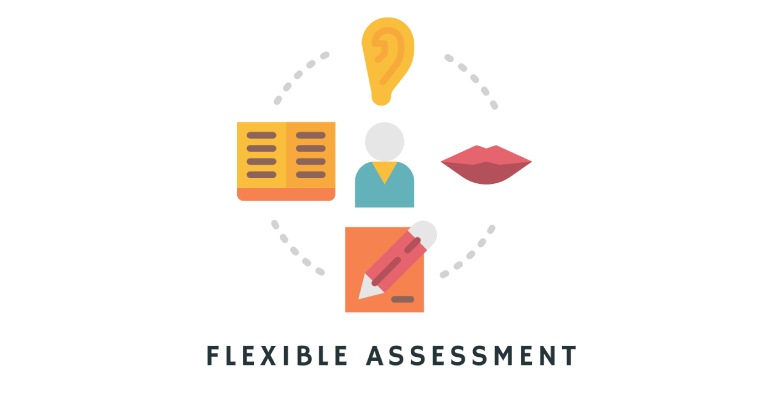
1. Translate Content into Multiple Languages
When localizing EdTech content, the first and most obvious step is to translate your materials into the languages of your target markets. However, this process requires more than just a literal translation of words. To maintain quality and accuracy, it’s essential to work with professional translation services that understand the nuances of educational content. By providing content in multiple languages, you make your platform accessible to a broader audience, fostering inclusivity and engagement. Localizing EdTech content in this way ensures that learners feel seen and understood, as they can engage with educational material in their native language.
Moreover, it’s important to consider the different dialects and regional variations within languages. For instance, Spanish used in Mexico differs significantly from the Spanish used in Spain. Tailoring your content to these variations when localizing EdTech content can make a substantial difference in how it is received by the audience. A well-localized platform can bridge language gaps, making learning more effective and enjoyable for users across different regions.
2. Adapt Content for Cultural Relevance
Language is just one aspect of localizing EdTech content. To truly connect with learners in different regions, it’s important to tailor your EdTech content to resonate with local customs, values, and learning preferences. This could involve modifying examples, imagery, and tone to align with the cultural context of each market. For example, a lesson plan that works well in a Western context might need to be completely reimagined for an audience in Asia or the Middle East.
Cultural relevance extends to the themes and subjects covered in your content. When localizing EdTech content, it’s essential to ensure that the topics resonate with the local audience. This might mean including region-specific case studies, historical references, or even modifying the context of examples to better fit the lived experiences of learners in that region. The more culturally relevant the content is, the more likely it is to engage students and enhance their learning experience.

In addition to content adaptation, the visual elements used in your EdTech platform must also be considered when localizing EdTech content. Images, colors, and symbols can carry different meanings in different cultures. For instance, the color white is often associated with purity in Western cultures but may be associated with mourning in some Asian cultures. By being mindful of these cultural differences and incorporating them into your localization efforts, you can create a more inclusive and respectful learning environment.
3. Optimize for Local Devices and Connectivity
One often overlooked aspect of localizing EdTech content is optimizing for local devices and connectivity. Different regions may have varying access to technology, with differences in device types, internet speeds, and overall tech infrastructure. Your platform should be designed to function seamlessly across these diverse environments. This might mean creating lightweight versions of your platform for areas with low bandwidth or ensuring compatibility with older devices commonly used in certain regions.
When localizing EdTech content, it’s also important to consider the operating systems and software that are prevalent in your target markets. For instance, Android devices might dominate in some regions, while others may have a higher penetration of iOS devices. Ensuring that your platform performs well across different operating systems is key to providing a smooth user experience. Additionally, consider the accessibility features that might be needed in different regions, such as support for right-to-left text or localized keyboard layouts.
Another critical factor in localizing EdTech content is understanding the internet connectivity challenges in various regions. In areas where high-speed internet is not widely available, you may need to offer offline access to certain features or provide downloadable content. This not only makes your platform more accessible but also demonstrates your commitment to meeting the needs of all learners, regardless of their technological limitations.
4. Partner with Local Experts
To navigate the complexities of localizing EdTech content, collaborating with local experts is invaluable. These experts, including educators, instructional designers, and market specialists, possess deep knowledge of the target region’s educational landscape. Their insights can guide you in adapting your content to meet local standards and preferences. Additionally, partnering with local experts helps you avoid potential cultural missteps that could alienate your audience. By leveraging their expertise, you can create content that is not only relevant but also respectful and culturally sensitive.
Local experts can also play a crucial role in the testing and feedback stages of localizing EdTech content. They can provide valuable insights into how the localized content is perceived by the target audience and suggest further refinements to enhance its effectiveness. Furthermore, involving local experts in the development process can foster a sense of ownership and collaboration, making the localized content more likely to be embraced by the local education community.
5. Implement Flexible Assessment Methods
Assessment is a critical component of any educational platform, and it’s important to recognize that different regions have varying approaches to evaluation. When localizing EdTech content, you should adapt your assessment tools to align with local grading systems, testing formats, and academic standards. This ensures that your platform integrates seamlessly into existing educational frameworks. Flexible assessment methods allow educators to evaluate students in a way that is familiar and meaningful within their specific educational context, thereby increasing the likelihood of adoption.
When localizing EdTech content, consider incorporating a variety of assessment formats, such as formative assessments, summative assessments, and peer assessments, to cater to different educational practices. Additionally, it’s important to ensure that the language and cultural context of the assessment questions are appropriate for the target audience. This might involve rephrasing questions, changing examples, or even altering the format of the assessments to better align with local expectations.

Another aspect to consider when localizing EdTech content is the integration of technology-enhanced assessments, such as interactive quizzes, simulations, and adaptive testing. These tools can provide valuable insights into student performance and learning outcomes. However, it’s crucial to ensure that these technologies are compatible with the local infrastructure and that they are accessible to all students, regardless of their technological capabilities.
6. Consider Regulatory Compliance
Entering new markets requires a thorough understanding of the local regulatory environment. This includes data privacy laws, educational regulations, and content restrictions that may vary from country to country. When localizing EdTech content, it’s crucial to ensure that your platform complies with these regulations. This might involve adjusting data storage practices, obtaining necessary certifications, or modifying certain features to meet local requirements. Failing to adhere to local regulations can result in legal challenges and damage your brand’s reputation. By prioritizing compliance, you build trust with your users and avoid potential pitfalls.
When localizing EdTech content, it’s also important to consider the specific educational policies and standards of each region. This might include aligning your content with national or regional curriculum frameworks, ensuring that your platform meets accreditation requirements, and adapting your platform to comply with local grading systems and academic standards. By adhering to these regulations, you can ensure that your platform is recognized and valued by educational institutions and authorities in the target market.
Another important consideration when localizing EdTech content is the protection of user data. Different regions have different laws and regulations governing data privacy, and it’s essential to ensure that your platform complies with these laws. This might involve implementing data encryption, securing user information, and obtaining user consent for data collection. By taking these steps, you can build trust with your users and protect their privacy.
7. Localize User Interfaces and Support
A key aspect of localizing EdTech content is ensuring that your platform’s user interface, navigation, and support resources are fully localized. This goes beyond simply translating text. It includes adapting date formats, units of measurement, and currency displays to match local conventions. Additionally, offering support in the local language, with an understanding of local educational systems and cultural nuances, is essential for providing a seamless user experience. Localized user interfaces and support resources help users feel more comfortable and confident in navigating your platform, ultimately leading to higher engagement and satisfaction.
When localizing EdTech content, it’s also important to consider the accessibility of your platform for users with disabilities. This might involve implementing features such as screen readers, closed captioning, and keyboard navigation to ensure that all users can access and benefit from your platform. Additionally, consider providing localized customer support that understands the specific needs and challenges of users in each region. This could include offering support in multiple languages, providing region-specific FAQs, and offering live chat or phone support in the local time zone.
Another important aspect of localizing EdTech content is building relationships with local stakeholders, such as educators, administrators, and policymakers. By engaging with these stakeholders and involving them in the development and promotion of your platform, you can build trust and credibility in the local market. This can help to increase the adoption and success of your platform.
Conclusion
Localizing EdTech content is a multifaceted process that involves more than just translation. It requires a deep understanding of cultural, educational, and technological differences across regions. By following the eight strategies outlined above—translating content, adapting for cultural relevance, optimizing for local devices, partnering with local experts, implementing flexible assessment methods, considering regulatory compliance, localizing user interfaces, and developing culturally sensitive marketing—you can successfully expand your EdTech platform into global markets. This thoughtful approach to localization not only unlocks new opportunities for growth but also enhances the learning experiences of students worldwide.
By taking a comprehensive approach to localizing EdTech content, you can ensure that your platform is effective, engaging, and accessible to learners in different regions. This can help to drive the adoption and success of your platform, allowing you to reach new markets and unlock new growth opportunities. Whether you are a small startup or a large corporation, localizing EdTech content is an essential step in expanding your reach and making a positive impact on the global education landscape.
